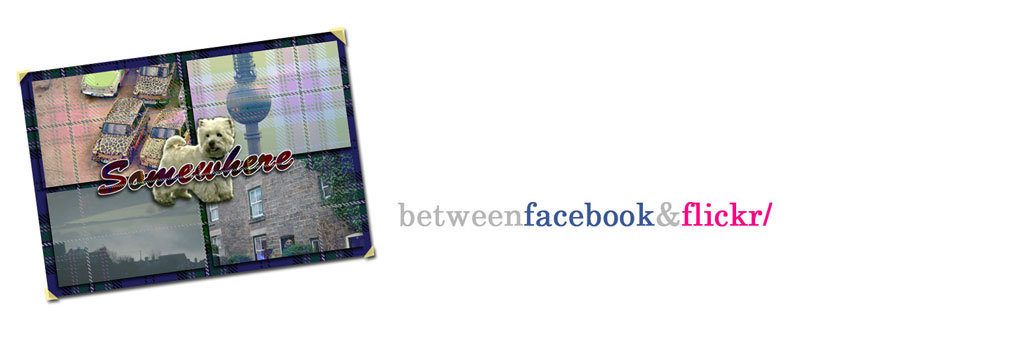One of the places that has featured a lot in our lives over the past year and three quarters is the Berlin Zoo. Given that it's only 10 minutes walk from our apartment, it's close enough to warrant regular visits and the cost of the annual pass is very reasonable when you consider that it's not only provided education and entertainment for me and the kids, but has also been my main source of photographic ID in Berlin. The German authorities might not recognise my (supposedly) global health insurance card, but a flash of my Berlin Zoo card has allowed me to drop my kids off in a creche, collect parcels, rent DVD's, and generally get me past the kind of German administration barriers which normally see me having to return home, pick up my passport, and go through it all again. It wouldn't surprise me if I could fly with it: "Oh, you're with the Berlin Zoo? Well, why didn't you say? No passport required!".
 |
| The Aquarium entrance from inside Berlin Zoo with the ceramic frieze on the inner stairwell. |
Now I should be an authority on animals by now, but the truth is, when we first arrived there was a lot of whooshing past a lot of the animals in order to see "more!". The kids, then 2 and 3 years old, were just keen to see everything at lightening speed, and it didn't really matter as I could come every day of the year if I wished. These days the kids seem almost jaded by it all. When you see tigers more often than you see regular cats, it's hard to get whipped up into a frenzy.
But it's a lovely place to visit. It's beautifully laid out, and the zoo architecture is pretty special.
"As a field, the architecture of zoos is a funny thing. The difficulty in distinguishing it from the design of individual animal enclosures lies in the fact that each impacts the other in almost every case. [...] Zoo buildings instead usually reflect a negotiation between prevailing notions of an animal's best interests, and the desire to frame visitors' experience of looking at those animals in a way that they consider noteworthy. More simply, it's a negotiation between what's designed for animals, and what's designed for humans.
 |
| Berlin Zoo's Ostrich House (image via 'The Smart Set') |
You can usually tell which is winning by where and when you stand in the history of the zoo. European zoos of the late 19th and early 20th centuries incorporated the visual cultures of their animals' native homes into ornate buildings — reflections of their nations' colonial aspirations. The Berlin Zoo's ostrich house resembled an Egyptian temple, with large columns flanking the entrance and scenes of ostrich hunts decorating the exterior. Berlin's elephant enclosure was built in the spirit of a Hindu temple; the home for its giraffes adopted an Islamic architectural style. Zoos in Cologne, Lisbon, Antwerp, and Budapest, among others, created similar exhibits. These zoos were no home for subtlety: The animals they contained were exotic to most visitors; the buildings that did the containing reinforced the sensation." - 'The Elephant in the Room', by Jesse Smith for The Smart Set
Nowadays, most zoos try to recreate as natural an environment for the animals as possible: the zoos role in society is more for preserving & breeding (endangered) animals, than for the exhibit of creatures for our entertainment. Yet that's still a role that they provide in order I assume to bring in funding for breeding programmes. Obviously there are a lot of people who don't like zoos and don't approve of animals being kept in captivity in this way, and you can read an awful lot more about that topic elsewhere on the web.
 |
| The Elephant Gate on Budapester Strasse |
Berlin Zoo was opened in 1844, with original animals and birds donated by Friedrich-Wilheim IV. One of the most impressive pieces of architecture is the Elephant Gate entrance on Budapester Strasse. The original was built in 1899, but like a large proportion of the zoo, it was destroyed during the war and was reconstructed in 1984 as an exact replica, and is now one of the most photographed sights in Berlin.
One of my favourite buildings is the giraffe house, but if I had to live in any of them I would choose the Zebra house, which has an actual little house attached to it (see above left image). How lovely to look out of the window and see zebras in your garden in Berlin!
Not all the buildings in the zoo are as lovely. As time has gone on you can see the architectural style of the buildings has evolved. While the elephants were once housed in a beautiful pagoda-style building which post-war has been replaced with something less exciting and probably more practical.
 |
| (l-r) The old Pagoda elephant house & sole surviving elephant in 1943/44. The modern elephant house. The latest baby elephant. |
But what I really want to know is: when German anthropologists brought back a group of 30 or so Sudanese people in 1878 to study, and kept them in Berlin Zoo, what was their building like? Doesn't it seem astonishing that this happened just over 100 years ago? Perhaps it will be just as astonishing in 100 years time to think that we used to visit and look at animals in zoos today.
Links:
http://www.zoo-berlin.de (The Berlin Zoo website)
Tours of Berlin Zoo (incl. architecture tour info & booking)
War damage to the Berlin Zoo ostrich house (joshuaandandrew.blogspot.com)
http://www.bargaintraveleurope.com/07/Germany_Berlin_Zoo.htm
World War Zoo Gardener was where I found an interesting article on 'animal civilians' and their plight during world wars & also was the source of the image of the old elephant pagoda house circa 1943/44




No comments:
Post a Comment
You're not going to leave without saying something, are you?